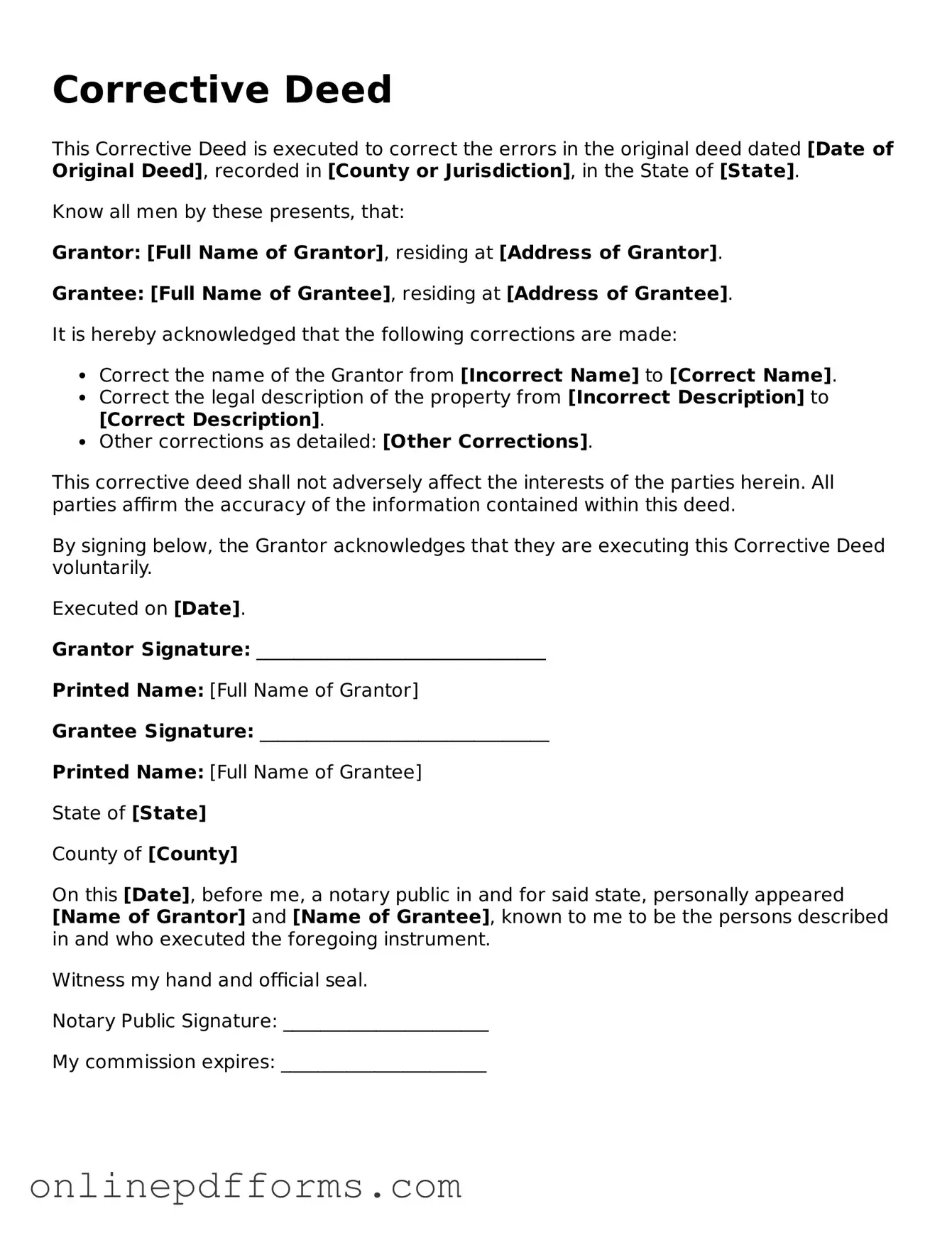The Quitclaim Deed is similar to the Corrective Deed in that it transfers ownership of property without any warranties. When a property owner wishes to transfer their interest in a property but does not guarantee the title, they often use a Quitclaim Deed. This document is straightforward and serves to clear up any potential claims or disputes regarding ownership, much like a Corrective Deed aims to rectify errors in previous deeds.
The Warranty Deed provides a more comprehensive guarantee than a Corrective Deed. While a Corrective Deed addresses mistakes in the original deed, a Warranty Deed assures the buyer that the seller holds clear title to the property and has the right to sell it. If issues arise after the sale, the seller is responsible for addressing them, which is not the case with a Corrective Deed.
For those looking to navigate the intricacies of property ownership, understanding the advantages of a comprehensive Texas Deed form can prove beneficial. Access the necessary information by visiting this Texas Deed form guide.
A Special Warranty Deed is another document that shares similarities with the Corrective Deed. It offers a limited warranty, ensuring that the seller has not done anything to harm the title during their ownership. While the Corrective Deed corrects errors in the title, the Special Warranty Deed only guarantees the title for the period of the seller’s ownership, making it a more limited option.
The Bargain and Sale Deed resembles the Corrective Deed in that it implies some level of ownership but does not guarantee a clear title. This type of deed is often used in foreclosures and tax sales, where the seller may not have full knowledge of the property’s title history. Like a Corrective Deed, it can help clarify ownership issues but does not provide full protection to the buyer.
An Affidavit of Title can also be compared to a Corrective Deed. This document is used to confirm the status of a property’s title. It serves as a sworn statement by the seller regarding any liens or claims against the property. While a Corrective Deed rectifies specific errors in documentation, an Affidavit of Title provides additional assurance about the state of the title.
The Deed of Trust, while primarily a security instrument, shares the goal of clarifying property ownership. It involves three parties: the borrower, the lender, and the trustee. The Deed of Trust secures a loan with real estate, similar to how a Corrective Deed aims to clarify ownership issues related to real estate transactions.
The Release of Lien is another document that can relate to the Corrective Deed. It is used to remove a lien from a property title. When a lien is satisfied, a Release of Lien clears the title, similar to how a Corrective Deed addresses errors that may cloud the title. Both documents aim to ensure that the title is clear for future transactions.
The Power of Attorney can also be linked to the Corrective Deed in terms of authority over property transactions. A Power of Attorney allows one person to act on behalf of another in legal matters, including property transfers. If a Corrective Deed is necessary, a Power of Attorney might be used to authorize someone else to sign the document, ensuring that the corrections can be made promptly.
Lastly, the Certificate of Title is relevant as it provides proof of ownership and the status of the property title. Similar to the Corrective Deed, it aims to clarify any issues related to the title. While a Corrective Deed corrects specific errors, a Certificate of Title verifies the accuracy of the title information, ensuring that all parties are informed before any transactions occur.
